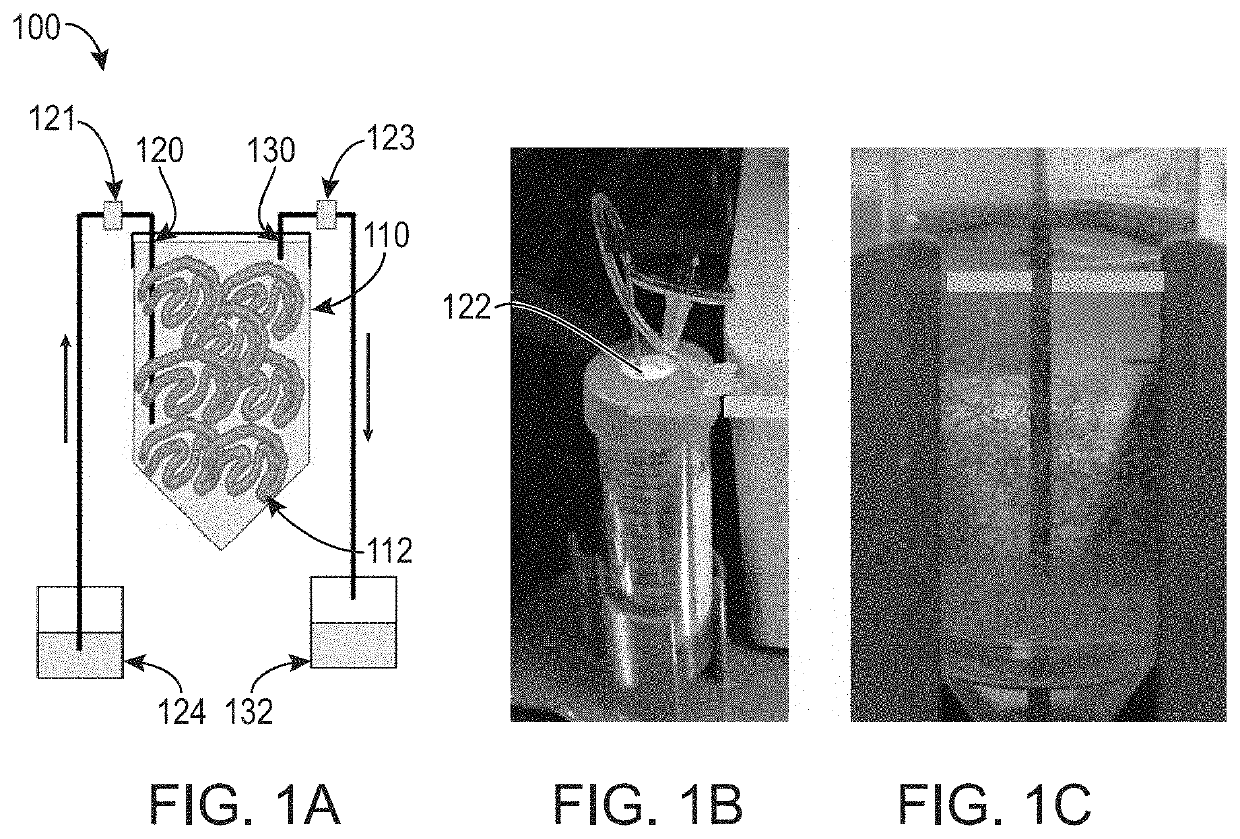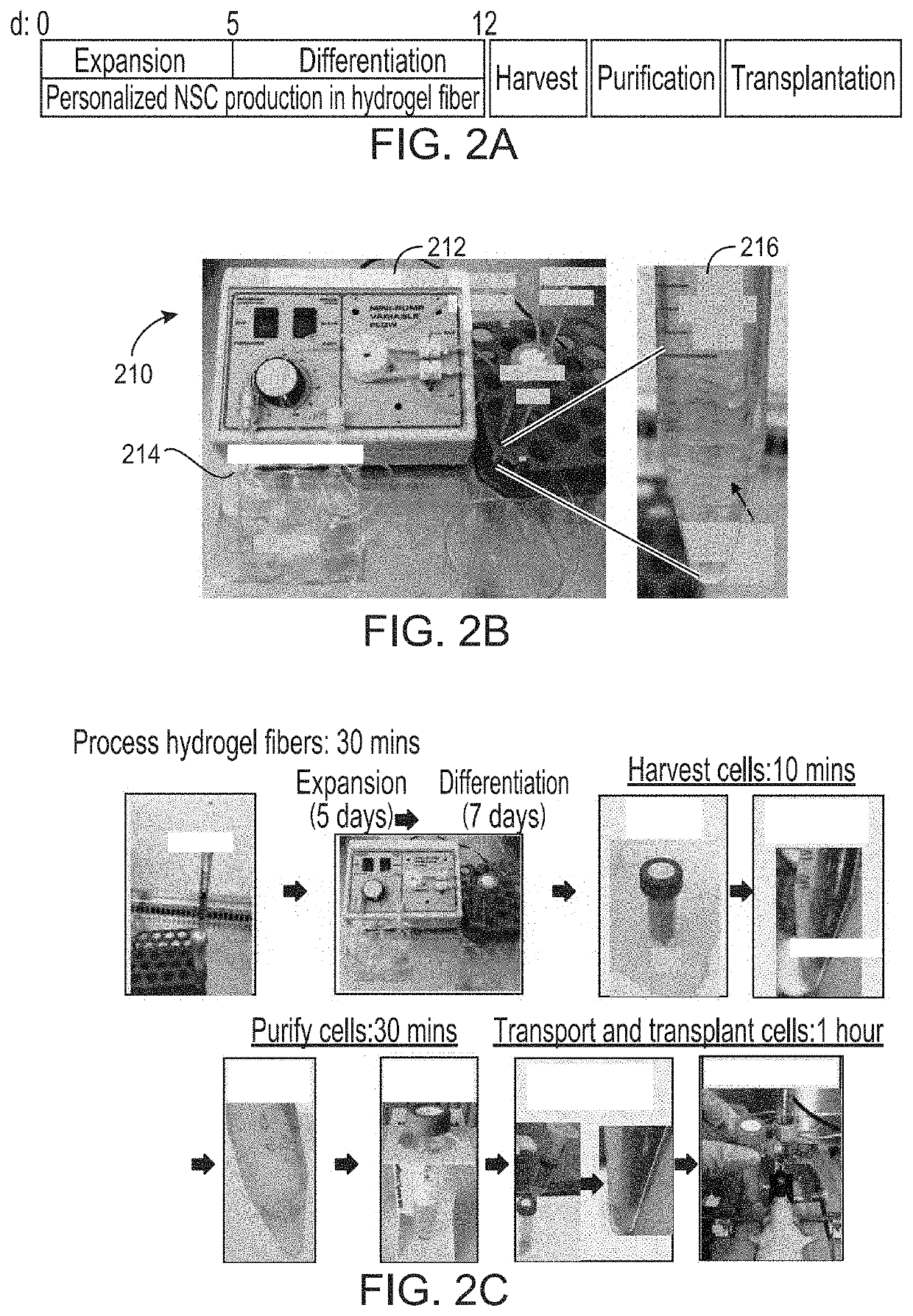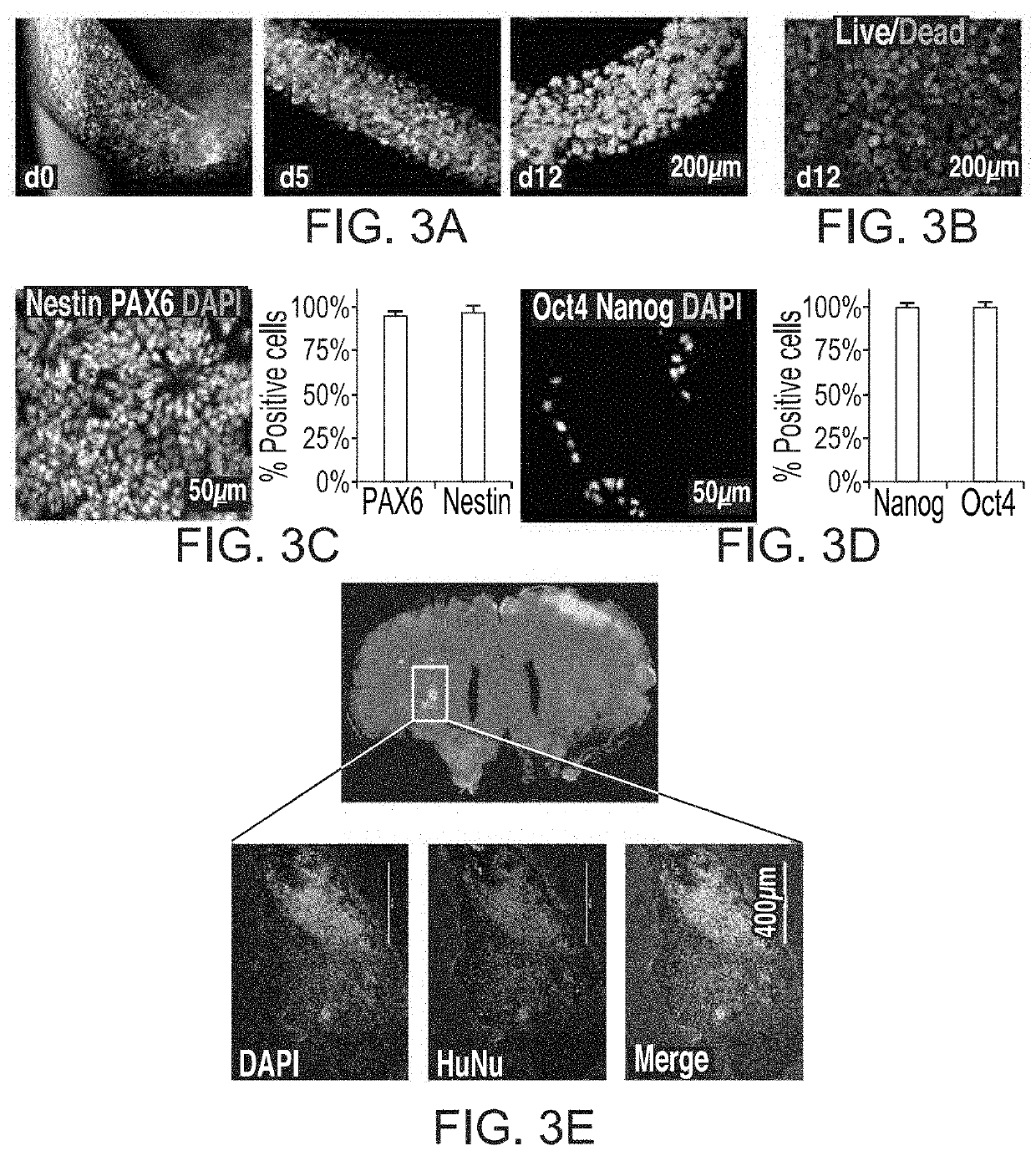Personalized cellular biomanufacturing with a closed, miniature cell culture system
- Summary
- Abstract
- Description
- Claims
- Application Information
AI Technical Summary
Benefits of technology
Problems solved by technology
Method used
Image
Examples
example 1
[0048]In this Example, expansion and growth of neural stem cells (NSCs) from induced pluripotent stem cells (iPSCs) were analyzed.
[0049]Methods
[0050]Miniature bioprocessing: With a syringe, 4° C. PNIPAAm-PEG solution containing iPSCs were injected into room temperature E8 medium in a 15-ml conical tube. Fibrous hydrogels were formed instantly. A Variable-Speed Peristaltic Tubing Pump (Control Company, USA) was used to continuously perfuse the culture medium into the tube through septum cap. Medium was stocked in a sealed and oxygen-permeable plastic bag. Medium in the bag was changed daily. The cell culture tube, pump and medium bag were placed in a cell culture incubator at 37° C. E8 medium and neural induction medium was used for days 1 to 5, and days 6 to 12, respectively. On day 12, the cell culture tube was placed on ice for 5 minutes to liquefy the hydrogel and release the spheroids. Cells were collected by spinning the tube at 100 g for 5 minutes. The cell pellet was treated ...
example 2
[0056]In this Example, expansion and growth of neural stem cells (NSCs) from induced pluripotent stem cells (iPSCs) were analyzed.
[0057]Methods
[0058]Miniature bioprocessing: a home-made micro-extruder was used to process alginate hollow fibers. A hyaluronic acid (HA) solution containing single cells and an alginate solution was pumped into the central and side channel of the home-made micro-extruder, respectively, and extruded into a CaCl2 buffer (100 mM) in a closed 15-mL conical tube to make hollow fibers (FIGS. 4A, 5A & 5B). Subsequently, CaCl2 buffer was replaced by cell culture medium. A Variable-Speed Peristaltic Tubing Pump (Control Company, USA) was used to continuously perfuse the culture medium into the tube through septum cap. Medium was stocked in a sealed and oxygen-permeable plastic bag. Medium in the bag was changed daily. The cell culture tube, pump and medium bag were placed in a cell culture incubator at 37° C. E8 medium and neural induction medium was used for day...
example 3
[0064]In this Example, human skin fibroblasts were reprogrammed into iPSCs using the methods and devices of the present disclosure.
[0065]Fibroblasts transfected with Episomal reprogramming vectors (e.g. EpiS™ Episomal iPSC Reprogramming Kit, ThemoFisher, Catalog number: A15960) were encapsulated and cultured in 3D thermoreversible PNIPAAm-PEG hydrogels prepared as described in Example 1 in E8 medium.
[0066]As shown in FIG. 7, pure iPSCs were produced within approximately 3 weeks.
[0067]These results demonstrated that the methods and devices of the present disclosure can be used to culture and manufacture cells. It is contemplated that the methods may be useful in both research laboratories, industries, and at the point-of-care for preparing sufficient and high quality cells for disease and injury treatments, screening libraries for drugs, and manufacturing proteins and vaccines.
PUM
 Login to View More
Login to View More Abstract
Description
Claims
Application Information
 Login to View More
Login to View More - R&D
- Intellectual Property
- Life Sciences
- Materials
- Tech Scout
- Unparalleled Data Quality
- Higher Quality Content
- 60% Fewer Hallucinations
Browse by: Latest US Patents, China's latest patents, Technical Efficacy Thesaurus, Application Domain, Technology Topic, Popular Technical Reports.
© 2025 PatSnap. All rights reserved.Legal|Privacy policy|Modern Slavery Act Transparency Statement|Sitemap|About US| Contact US: help@patsnap.com



